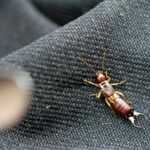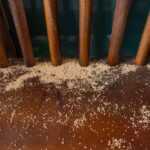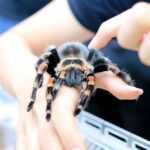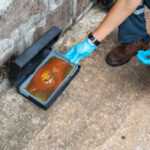Black Widow Spider: Identification and Safety Tips
Learn how to identify a black widow spider, recognize its venomous bite, and get expert tips on safety, prevention, and removal at home.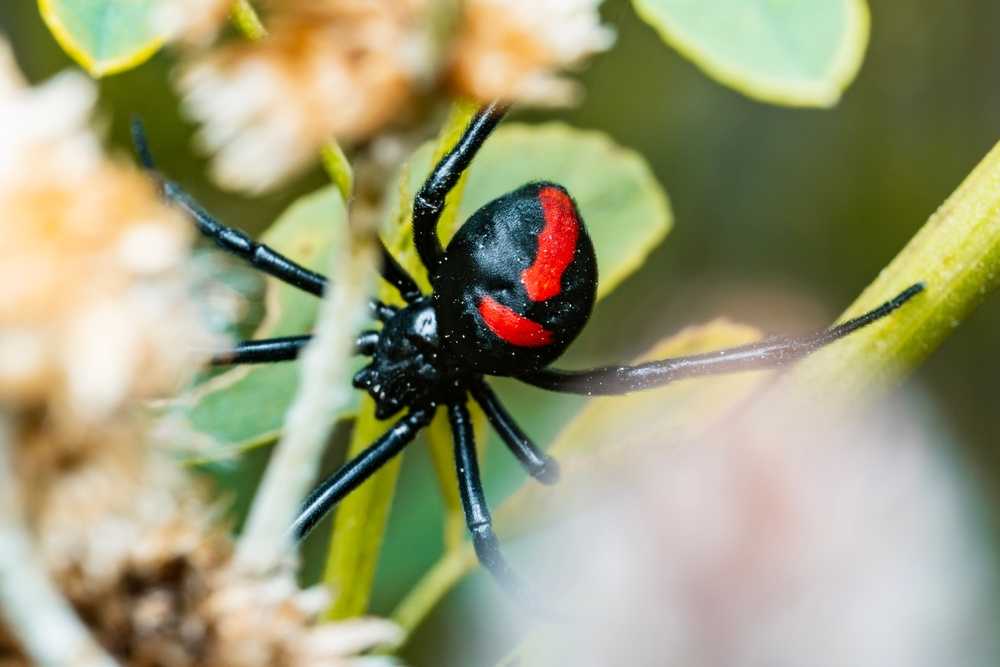
The widow black spider is a highly venomous member of the genus Latrodectus, known for its potent neurotoxic venom. Identifying this spider is essential for safety.
- Black widow spiders possess a highly potent venom, primarily due to alpha-latrotoxin, which disrupts nerve function and can lead to severe symptoms like muscle cramps, spasms, and muscle aches.
- These spiders are found predominantly in the southeastern United States, extending into southern Canada, favoring dark places and undisturbed habitats both indoors and outdoors, making them hard to detect.
- Immediate action and recognition of symptoms after a black widow spider bite are crucial; prompt medical treatment should be sought if severe symptoms occur, especially in high-risk individuals.
Venom Composition
Black widow spiders are infamous for their potent venom, which contains a key component known as alpha-latrotoxin. This presynaptic neurotoxin activates neurons by promoting calcium influx, leading to uncontrolled neurotransmitter release. Alpha-latrotoxin interacts with the CIRL or latrophilin receptor, triggering neurotransmitter exocytosis in the central nervous system. The black widow spider Latrodectus mactans is particularly noted for this effect.
The effects of alpha-latrotoxin are not limited to neurotransmitters. It also enhances the exocytosis of hormones like epinephrine and insulin, resulting in a pathological increase in intracellular calcium that disrupts normal nerve function. This disruption can lead to severe symptoms, including muscle cramps and spasms, which are hallmarks of a black widow bite.
Interestingly, alpha-latrotoxin exhibits structural similarities to certain peptide hormones, suggesting a shared evolutionary mechanism for targeting G protein-coupled receptors. This intricate mechanism underscores the complexity and potency of black widow venom, making it one of the most dangerous in the arachnid world.
Habitat and Distribution
Black widow spiders are found worldwide, but they are particularly prevalent in the southeastern United States, extending north to Ohio and west to Texas, and into southern Canada. These spiders prefer low-lying areas but can also be found several meters above ground, showcasing their adaptability.
In terms of habitat, black widow spiders thrive in undisturbed places such as wood and rock piles, rodent burrows, hollow tree stumps, and dark corners indoors like garages, basements, and sheds. Their webs are sticky and irregular, often found in dark places that provide shelter.
Knowing the typical environments where these spiders live helps in prevention. Recognizing their likely habitats allows you to take steps to avoid them and safeguard your home.
Recognizing Black Widow Spiders
Identifying black widow spiders requires noting their distinctive features. Female black widows, for instance, have a glossy black body with a striking red or orange hourglass marking on the dorsal side of their abdomen.
This section will delve into the specifics of identifying female southern black widows, as well as male and immature black widows.
Female Southern Black Widow
The female southern black widow (Latrodectus mactans) is particularly notable for its red hourglass mark located on the underside of its abdomen. This shiny black spider can measure up to 1.5 inches in body length, making it the largest among the widow spiders. The lifespan of a female black widow spider is about three years, during which it remains a potent threat due to its venomous bite.
Female southern black widows also have a glossy, smooth appearance, with the red hourglass shape being a key identifier. This marking distinguishes them from other spiders in the same areas.
Male and Immature Black Widows
Male black widows are significantly smaller than their female counterparts, typically measuring only about 4 to 6 millimeters in body length. Unlike the solid black females, males are usually brown or gray and feature small red spots instead of the hourglass marking. These markings can include white underbody spots with red highlights, providing a stark contrast to the females’ appearance.
Immature black widows present a variety of colors, including orange and brown, before maturing into their trademark black coloration. These variations are essential for early identification of potential threats. As immature black widows grow, they develop the characteristic bright markings that set them apart from other spiders.
Understanding these differences helps in accurately identifying black widows at various stages of their life cycle. This knowledge can be invaluable in preventing accidental bites and ensuring appropriate measures are taken when these spiders are found.
Symptoms of Black Widow Spider Bites
A black widow spider bite is notorious for its immediate and severe symptoms, which can also be a concern when considering other spider bites. Initially, the bite can create a sharp pain, akin to a pinprick. This initial pain can range from minimal to sharp and is often accompanied by swelling and redness at the bite site.
Within 30 to 60 minutes after being bitten, more severe symptoms may develop. These can include muscle cramps and spasms, starting near the bite area and potentially spreading to other parts of the body. The severe pain can radiate to the abdomen, back, or chest and may be accompanied by headaches, restlessness, and muscle aches.
Early recognition of these symptoms is vital for effective treatment. Being aware of what to expect helps in acting quickly, reducing the risk of serious complications.
Immediate Actions After a Bite
If you suspect a black widow spider bite, take immediate action. Wash the bite area with soap and water to reduce infection risk. Apply a cold compress to decrease pain and swelling, and elevate the bitten area if possible.
Avoid attempting to suck out the venom, as it can worsen the situation. Contact a poison control center for guidance and further instructions. Prompt action can mitigate the venom’s effects and improve the bite’s outcome.
Remember, quick and appropriate action is crucial when dealing with a venomous bite.
When to Seek Medical Help
Certain symptoms require urgent medical attention after a black widow spider bite, such as trouble breathing, high blood pressure, and severe muscle pain. Seek medical help immediately if you experience any of these symptoms.
Children under 16, adults over 60, and pregnant women are at higher risk for serious complications and should seek prompt medical assistance. Other symptoms requiring emergency care include nausea, vomiting, excessive sweating, and severe high blood pressure.
A prompt medical evaluation can facilitate recovery and reduce life-threatening complications. Do not hesitate to seek professional medical help if a black widow spider bite is suspected.
Treatment Options
Treatment for black widow spider bites may include hospitalization for severe symptoms like trouble breathing, severe muscle pain, or cardiovascular issues. Latrodectus antivenin can counteract the venom’s effects, especially in cases of severe muscle cramping.
Muscle relaxants and other medications may also be prescribed to alleviate pain and discomfort. Return for emergency care if new symptoms develop, such as a persistent rash, joint pain, or blood in urine.
Following medical treatment and keeping up with healthcare providers can ensure full recovery and minimize the risk of complications from a black widow spider bite.
Preventing Black Widow Spider Encounters
Preventing encounters with black widow spiders involves knowing their common hiding spots. Indoors, they favor dark corners and crevices, garages, crawl spaces, and basements. Outdoors, they can be found in woodpiles, hollow stumps, and under rocks.
Essential oils like peppermint and tea tree in diluted solutions can act as effective spider repellents. Installing yellow or sodium vapor outdoor lights can also reduce the presence of insects that attract black widows.
Vigilance and preventive measures can significantly reduce the risk of encountering black widow spiders. Proactive steps can protect your home and family from these venomous arachnids.
Understanding and identifying black widow spiders are crucial for safety. Recognizing the symptoms of their bites and knowing the immediate actions to take can prevent serious complications. Preventive measures can help avoid encounters with these dangerous spiders.
With professional help, you can achieve a pest-free environment and peace of mind.
Frequently Asked Questions
How can I identify a female black widow spider?
To identify a female black widow spider, look for a glossy black body accompanied by a distinctive red or orange hourglass marking on the dorsal side of its abdomen. This visual characteristic is crucial for accurate identification.
What should I do if I get bitten by a black widow spider?
If bitten by a black widow spider, promptly wash the bite area with soap and water, apply a cold compress, elevate the area, and contact a poison control center for guidance. Timely action is essential for proper care.
When should I seek medical help after a black widow spider bite?
You should seek medical help immediately if you experience difficulty breathing, high blood pressure, or severe muscle pain, especially if the victim is a child, elderly, or pregnant. Prompt medical attention is crucial in these situations.
What are the common hiding spots for black widow spiders indoors?
Black widow spiders commonly take refuge in dark corners, crevices, garages, crawl spaces, and basements. Ensuring these areas are clean and clutter-free can help reduce their presence.
How can I prevent black widow spider encounters?
To prevent black widow spider encounters, use essential oils like peppermint and tea tree as repellents, and install yellow or sodium vapor outdoor lights. Staying vigilant in areas where these spiders are commonly found is also essential.
